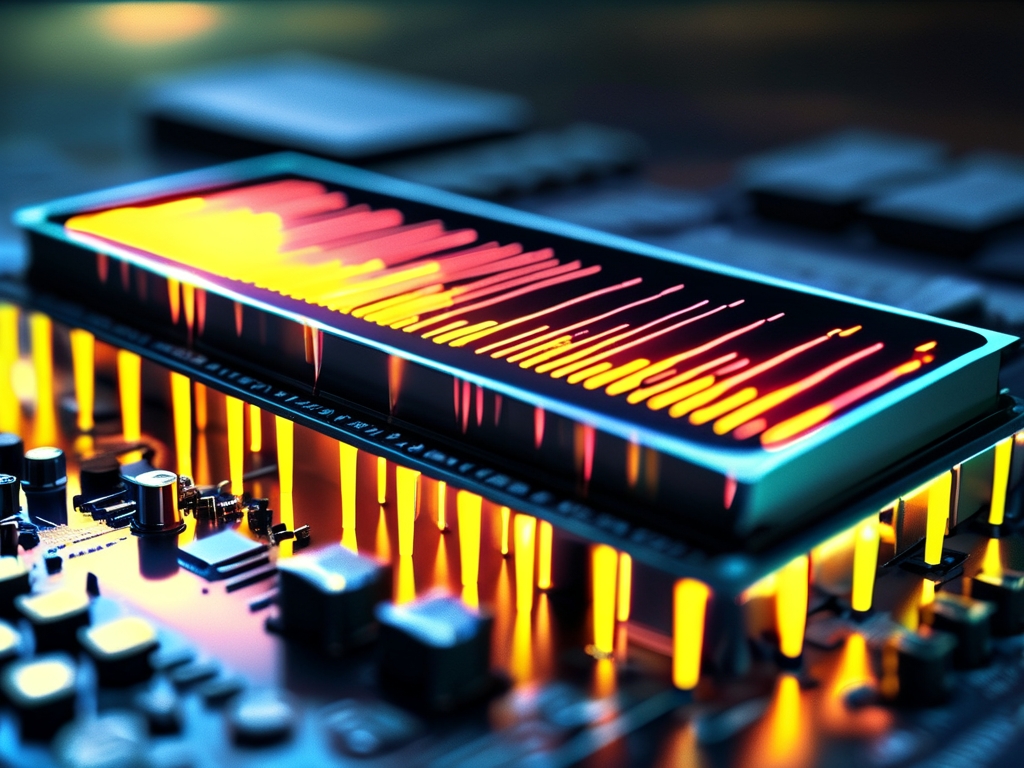Understanding the maximum current consumption of memory modules is critical for designing stable electronic systems. This article explores the core formula used to determine peak current values in memory components and its practical implications.

At the heart of memory current analysis lies the relationship between power dissipation, voltage, and operational frequency. The fundamental equation for calculating maximum current ((I{max})) is:
[
I{max} = \frac{P{max}}{V{dd}}
]
where (P{max}) represents the module’s peak power consumption (in watts) and (V{dd}) is the supply voltage (in volts). For example, a DDR4 module operating at 1.2V with a rated power of 3.6W would require:
[
I{max} = \frac{3.6}{1.2} = 3A
]
This calculation assumes ideal conditions, but real-world scenarios demand adjustments. Temperature fluctuations, signal integrity issues, and simultaneous switching noise (SSN) can increase actual current draw by 15–25%. Engineers often incorporate a safety margin using:
[
I{design} = I_{max} \times 1.3
]
Three key factors influence these calculations:
- Operational Modes: Refresh cycles in DRAM or write operations in NAND flash temporarily spike current demand.
- Data Patterns: Sequential vs. random access patterns create varying current profiles.
- Process Variations: Semiconductor manufacturing tolerances affect individual chip characteristics.
In embedded systems, designers must account for worst-case scenarios. A microcontroller accessing external SDRAM while handling interrupts might experience brief current surges exceeding steady-state predictions. Power delivery networks (PDNs) require low-impedance paths to prevent voltage droop during these events.
Advanced memory technologies like LPDDR5 introduce dynamic voltage scaling, complicating calculations. Here, engineers use time-weighted averages:
[
I_{avg} = \frac{\sum (I_n \times tn)}{T{total}}
]
where (I_n) and (t_n) represent current and duration for each operating state.
Validation through empirical testing remains essential. Oscilloscope measurements with current probes often reveal discrepancies between theoretical models and actual behavior. For instance, a 16GB DDR5 module tested at 2.4V might show 8.2A peaks despite an 7.5A calculated value, highlighting the need for iterative design refinement.
Thermal management directly ties to current calculations. Excessive current generates heat, potentially triggering throttling mechanisms. The thermal resistance equation:
[
\Delta T = I^2 \times R{th} \times R{ds(on)}}
]
emphasizes how current squared impacts temperature rise, underscoring the importance of accurate (I_{max}) determination.
Industry standards like JEDEC JESD209 provide guidelines but leave room for interpretation. A server-grade DIMM might prioritize sustained current tolerance, while automotive memory focuses on cold-cranking performance. Designers must adapt formulas to application-specific constraints.
Emerging non-volatile memories (e.g., MRAM, ReRAM) challenge traditional models. Their current profiles differ significantly during write operations, requiring revised calculation approaches. Research shows some resistive memories exhibit write currents 3× higher than read currents, necessitating dual-calculation methodologies.
In , while the basic (I_{max}) formula provides a starting point, successful memory integration demands layered analysis of operational contexts, empirical validation, and adaptive margin allocation.


